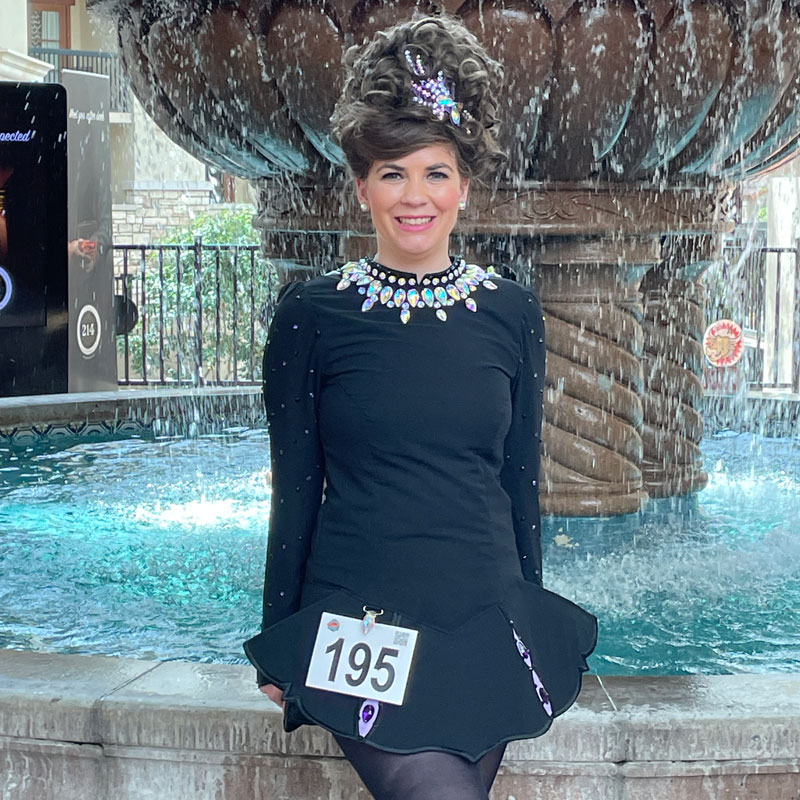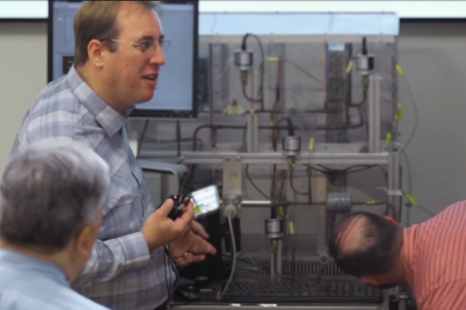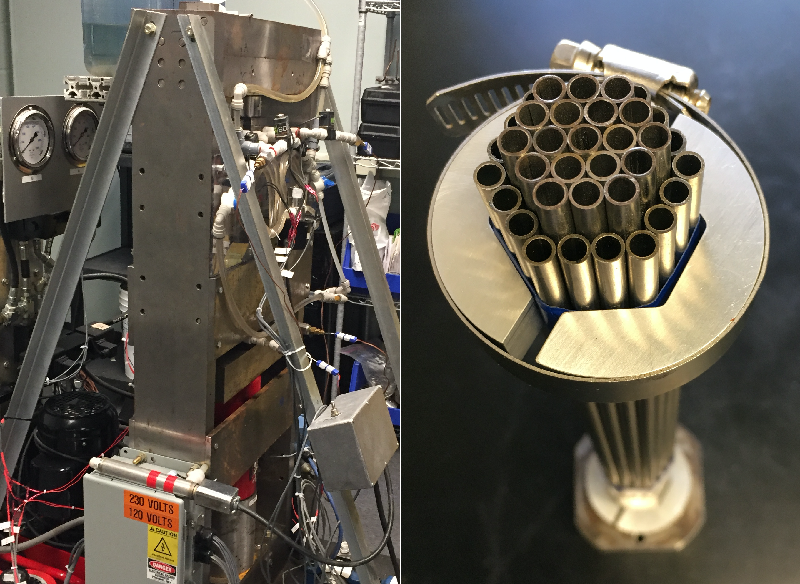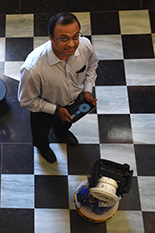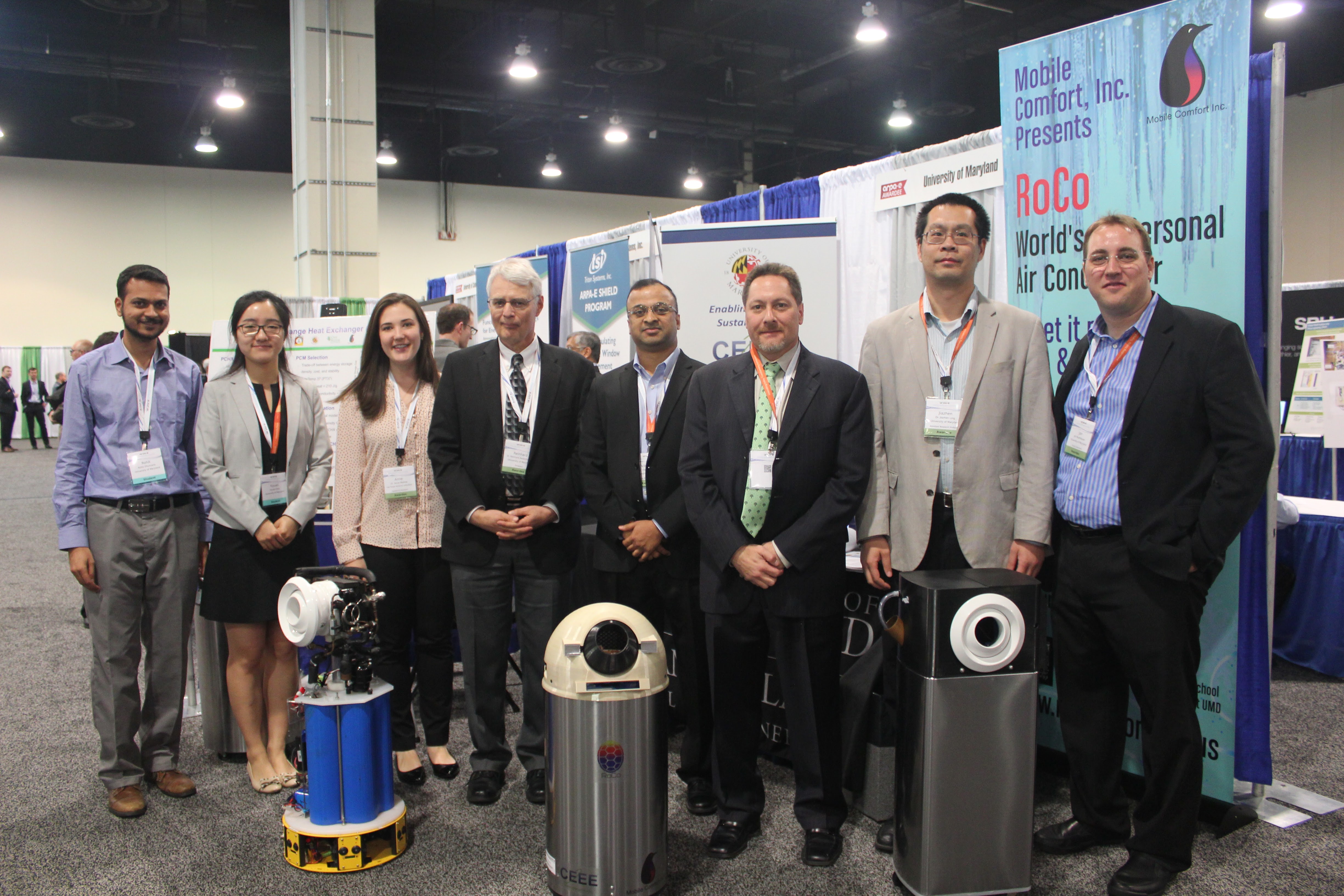News Story
Jump Start Program Gives CEEE Grad Students a Boost
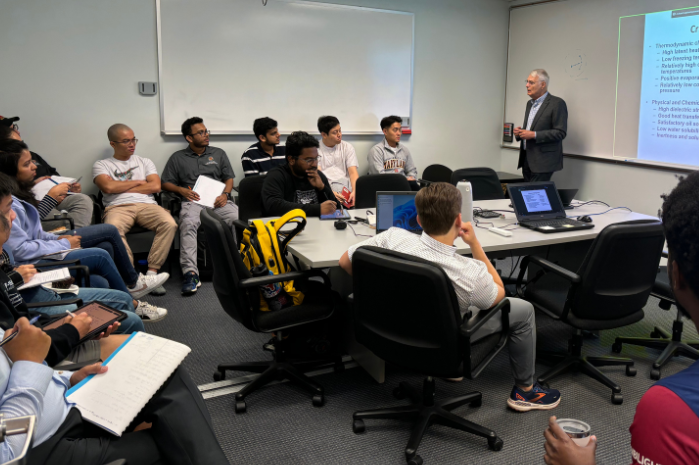
CEEE Director Reinhard Radermacher gave graduate students a jump start on their research in a session on refrigerants and psychrometrics.
A new program for graduate research assistants in the Center for Environmental Energy Engineering (CEEE) boosts their knowledge base, helping them make valuable research contributions. The four-session Jump Start workshop, offered for the first time this fall, focuses on the fundamentals of energy engineering as it applies to CEEE’s mission to develop eco-friendly heating, ventilation, and air conditioning (HVAC) systems and components. The program is geared toward students in CEEE’s Consortium for Energy Efficiency and Heat Pumps (EEHP) and Modeling and Optimization Consortium (MOC).
“The purpose is to bring graduate students up to speed on what we expect them to know in order to be productive in their research,” says CEEE Director Reinhard Radermacher, who led two of the four-hour sessions – one on working fluids, with an emphasis on refrigerants and psychrometrics, and one on the fundamentals of vapor compression cycles. CEEE Co-Director Vikrant Aute headed up a session on heat transfer and heat exchangers, and co-director Yunho Hwang led a session on advanced cycles.
Each year, CEEE recruits bright graduate students eager to innovate HVAC technologies that will slow climate change. This year’s incoming class includes Dana Kang, who is helping develop a cold-climate heat pump that would use refrigerants with low global warming potential (GWP). “The Jump Start sessions were incredibly helpful in providing a solid foundation for the research we are conducting in the lab,” Kang says. “The workshop provided a deeper dive into advanced thermodynamic cycles, heat transfer mechanisms and vapor compression cycles, all of which are crucial to know to conduct research in heat pumps. The sessions also emphasized the importance of low-GWP refrigerants and environmentally sustainable solutions, which are at the heart of the energy efficiency research conducted within CEEE.”
But the program was not limited to new students – all graduate students and postdoctoral researchers in CEEE’s EEHP and MOC consortia attended. “The idea was to refresh their memory on topics previously taught and to fill in any gaps in their knowledge,” Radermacher says. “When you hear things once, you don’t always remember them.” The sessions are designed to help students expand upon the concepts learned in their classes and apply them to CEEE’s research. “They get bits and pieces of this information in their classes, but it’s often not the whole picture as it relates to our work,” he notes.
 CEEE Co-Director Vikrant Aute helped students boost their understanding of heat transfer and heat exchangers – information important to CEEE's research.
CEEE Co-Director Vikrant Aute helped students boost their understanding of heat transfer and heat exchangers – information important to CEEE's research.While Jump Start is geared primarily to students, CEEE invited its sponsors in the HVAC industry to join virtually. Over 20 representatives logged on for a refresher course and a closer look into CEEE, with some professionals chiming in with industry perspectives. “One of the coolest things about these sessions was the sponsor comments,” says fourth-year graduate research assistant Brian O’Malley, “The sponsors added additional information on topics such as toxicity limits of refrigerants. That was a real benefit to have their input.”
Jump Start also encouraged students to think beyond their day-to-day research, gaining a wider perspective on the engineering of HVAC systems and components. “I spend most of my day thinking about heat exchangers,” says O’Malley, whose projects include developing novel air-to-refrigerant variable heat exchangers that would require less refrigerant than current technologies. "It's been helpful to step back and think about how different components fit within the broader context of the vapor compression cycle and why we use some refrigerants instead of others."
Published October 21, 2024
